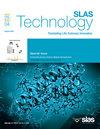自己动手的仪器集成到现有的哺乳动物细胞系开发自动化平台。
IF 2.5
4区 医学
Q3 BIOCHEMICAL RESEARCH METHODS
引用次数: 0
摘要
生物制药行业的实验室自动化通常需要高度专业的自动化解决方案提供商的合同服务,有时涉及购买和开发专门或定制的硬件和软件,这可能是专有的和昂贵的。另外,随着为自动化定制的开源软件的可用性,有可能以自己动手(DIY)、低成本和灵活的方式自动化现有的实验室仪器。在这项工作中,我们使用了一种开源脚本语言AutoIt,将现有的微孔板成像仪集成到现有的自动化平台中,该平台已经配备了一个4轴机械臂和一个自动培养箱,以实现我们细胞系开发工作流程中成像过程的自动化。此外,使用AutoIt进行了优化,以改进整个自动化成像过程,即i)纳入自动扫描配置文件选择步骤,ii)设置自动处理系统错误,以及iii)设置远程处理系统错误。综上所述,使用AutoIt进行DIY仪器集成证明是节省成本的,通用的,并且能够提高实验室自动化工作流程的效率。本文章由计算机程序翻译,如有差异,请以英文原文为准。
Do-it-yourself instrument integration into an existing mammalian cell line development automation platform
Laboratory automation in the biopharmaceutical industry as a rule requires contracted service from highly professional automation solution provider, at times involving the purchase and development of specialized or customized hardware and software, which can be proprietary and expensive. Alternatively, with the availability of open-source software customized for automation, it is possible to automate existing laboratory instruments in a do-it-yourself (DIY), low-cost, and flexible fashion. In this work, we used an open-source scripting language, AutoIt, to integrate an existing microplate imager into an existing automation platform that is already equipped with a 4-axis robotic arm and an automated incubator, to achieve automation of the imaging procedure in our cell line development workflow. Furthermore, optimizations were performed using AutoIt to improve the overall automated imaging process, namely i) incorporating an automated scan profile selection step, ii) setting up automated handling of system errors, and iii) setting up remote handling of system errors. In summary, the use of AutoIt for DIY instrument integration proves to be cost-saving, versatile, and able to enhance the efficiency of automation workflows in the laboratory.
求助全文
通过发布文献求助,成功后即可免费获取论文全文。
去求助
来源期刊

SLAS Technology
Computer Science-Computer Science Applications
CiteScore
6.30
自引率
7.40%
发文量
47
审稿时长
106 days
期刊介绍:
SLAS Technology emphasizes scientific and technical advances that enable and improve life sciences research and development; drug-delivery; diagnostics; biomedical and molecular imaging; and personalized and precision medicine. This includes high-throughput and other laboratory automation technologies; micro/nanotechnologies; analytical, separation and quantitative techniques; synthetic chemistry and biology; informatics (data analysis, statistics, bio, genomic and chemoinformatics); and more.
 求助内容:
求助内容: 应助结果提醒方式:
应助结果提醒方式:


